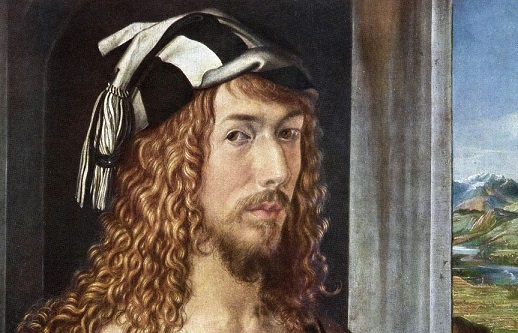When we think of the German Renaissance, one name shines brighter than the rest – Albrecht Dürer. Revered as one of the greatest artists of his time, Dürer seamlessly blended Northern European detail with Italian innovation, leaving an indelible mark on the world of art. His works, ranging from woodcuts to oil paintings, transcend time, offering glimpses into a pivotal era of cultural rebirth.
In this article, we will explore Albrecht Dürer’s life, his contributions to German culture, and the enduring legacy he left behind. Along the way, we will connect you with more insights into Germany’s rich artistic heritage, featured throughout GermanCulture.com.ua.
Albrecht Dürer: A Brief Overview
Born in 1471 in Nuremberg, Albrecht Dürer was a prodigy whose talents were evident from a young age. His early training in his father’s goldsmith workshop refined his meticulous eye for detail – a quality that would define his later works. By his twenties, Dürer had already traveled extensively, soaking in the innovations of Italian Renaissance artists like Leonardo da Vinci and Andrea Mantegna.
What made Dürer exceptional was his ability to combine the humanistic ideals of the Italian Renaissance with the intricate detail characteristic of Northern Europe. His masterpieces, including “Melencolia I,” “The Four Horsemen of the Apocalypse,” and his self-portraits, remain cornerstones of Western art history.
Dürer’s significance extends beyond mere aesthetics; he championed the idea of the artist as an intellectual, not merely a craftsman, helping to elevate the status of artists across Europe. His impact on German cultural identity cannot be overstated.
Life and Legacy of Albrecht Dürer
Early Influences and Training
Dürer’s upbringing in Nuremberg, a thriving center of commerce and culture, provided a fertile environment for his artistic growth. Apprenticed to the painter Michael Wolgemut, Dürer honed his skills in woodcut design – an experience that would later revolutionize printmaking across Europe.
At a time when printed images were relatively rare, Dürer’s woodcuts made complex themes accessible to a wider audience, shaping popular imagination across Europe.
(Explore more about Medieval German Art and Architecture to see the broader cultural backdrop against which Dürer emerged.)
Travels and Inspirations
Travel was essential to Dürer’s development. His journeys to Italy exposed him to new artistic techniques such as linear perspective, classical proportions, and humanist ideals. In Venice, he engaged with artists like Giovanni Bellini and absorbed Renaissance innovations that would reshape his approach to art.
These influences are clear in works like Adoration of the Magi and The Feast of the Rose Garlands. Italy not only refined his technical skills but also instilled a deeper appreciation for classical antiquity, which he harmonized with Northern European realism.
Dürer’s ability to synthesize these diverse traditions resulted in an entirely new visual language that deeply influenced German art for generations.
Master of Many Mediums
His iconic self-portraits – particularly the 1500 Self-Portrait at Twenty-Eight – assert the dignity and intellectual stature of the artist. Dürer presents himself almost Christ-like, signaling the semi-divine role of the artist as creator.
His watercolor landscapes, such as The Large Piece of Turf and View of Arco, reveal a startling realism and delicacy, showing that Dürer was not only a master of religious and allegorical subjects but also a pioneer of naturalistic art.
Dürer and the Reformation
One of the most fascinating aspects of Dürer’s career is his relationship with the Protestant Reformation. Though he remained a Catholic throughout his life, Dürer admired Martin Luther and the reformist movement.
In 1520, upon hearing of Luther’s arrest, Dürer wrote in his diary:
“O God, if Luther is dead, who will explain the Gospel to us so clearly?”
His support for religious reform is evident in later works that emphasize personal faith over ecclesiastical authority. Dürer’s art captured the spirit of questioning and individual conscience that defined the Reformation.
While he never fully aligned himself with Protestantism, Dürer’s sympathies reflect the broader cultural shifts sweeping across Germany at the time.
Practical Examples and Fascinating Facts
-
Signature Mastery: Albrecht Dürer was one of the first European artists to consistently sign his works with a monogram – the famous “AD” symbol. This practice emphasized the importance of artistic authorship, a revolutionary idea at the time.
-
Scientific Contributions: Dürer was not just an artist but also a mathematician and theorist. His treatises on measurement, fortification, and human proportion laid intellectual foundations that would influence architecture and engineering.
-
Cultural Tourism: Visitors to Germany can experience Dürer’s world firsthand by visiting the Albrecht Dürer House in Nuremberg, where exhibitions bring his creative process vividly to life.
-
Global Influence: His prints reached as far as Spain, Italy, and the Low Countries, inspiring countless artists including Raphael and Titian.
-
Animal Studies: Works like Young Hare and The Great Piece of Turf highlight Dürer’s scientific eye for nature – long before naturalism became mainstream.
Albrecht Dürer stands as a towering figure in German culture, blending unparalleled artistic skill with intellectual curiosity. His influence reverberates through art, science, and religious thought, securing his place among history’s great innovators.
From the bustling streets of Renaissance Nuremberg to the philosophical upheavals of the Reformation, Dürer captured the spirit of an era that shaped modern Europe.
If you want to explore more about Germany’s rich artistic heritage and the legends that shaped it, browse our comprehensive articles today:
Related Articles:
Famous Germans: Icons Who Shaped the World
Caspar David Friedrich captured the spiritual and emotional essence of Romanticism through his contemplative landscapes.
Franz Xaver Winterhalter was a celebrated portraitist of European royalty during the 19th century.
Sebastian Krüger is known for his hyperrealistic and often satirical portraits, blending fine art with pop culture.

